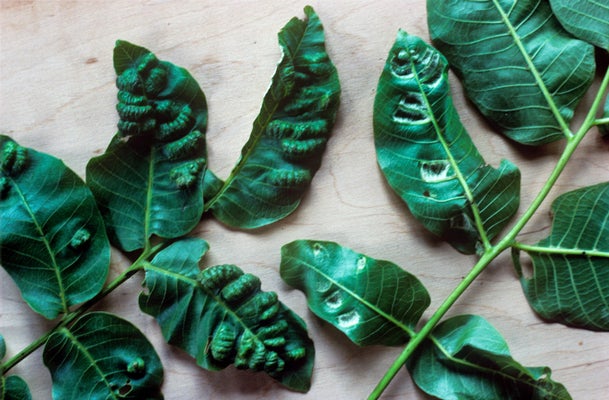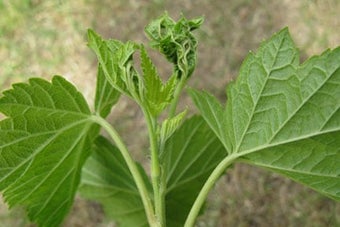
Quick facts
Common name - Walnut blister mite
Scientific name - Aceria erinea
Plants affected - Juglans spp.
Main symptoms - Blistering on upper surface of leaves and a hairy growths on undersides
Caused by - Microscopic mites
Most active - From late spring throughout the growing season
What is walnut blister mite?
Walnut leaf gall mite (sometimes known as walnut blister mite) is a type of eriophyid gall mite. These gall mites are tiny (less than 0.2 mm) -sucking creatures that cause a variety of abnormal growths on various plants, they have whitish and elongated body and unlike most arachnids only have two pairs of legs. There are many species of eriophyid mite which are usually host specific this means that each species of mite will only feed on a single, or several closely related, plant species. Although the mites are too small to be seen without a microscope, the galled tissues that they create are often very distinctive and easily recognised. The excessive growth of hairs on the underside of leaves caused by some gall mites, including walnut blister mite, is called a felt gall or erineum.
Symptoms
Symptoms begin to appear in late spring. The upper surface of affected leaves bulges upwards, creating shiny yellowish green blisters between two leaf veins. Beneath the raised areas, a dense coating of short fine hairs develops, amongst which the mites live and feed. The hairs are usually white.
While the mites are sucking , they secrete chemicals into the foliage that induces the abnormal growth. The hairy covering on the underside of the leaves could be mistaken for a fungal disease, such as mildew, but the mite is a not a problem. It does not affect the fruit and does not seem to have any harmful effect, apart from distorting the leaves.
Management
The mites do not affect the fruiting or health of walnut trees and can be accepted as a part of the walnut trees support.
If the mite cannot be tolerated and only a few leaves or shoots are affected by galling, these can be cut off and disposed of. If many leaves are affected, the presence of the mite should be tolerated, as removing affected leaves will damage the tree.
Biology
Walnut leaf gall mites overwinter on walnut trees by hiding away beneath scales. The mites emerge in spring and begin feeding on the new foliage. Several generations develop in the underside of the leaves during the summer. In late summer, the matted hairs created by the gall mites begin to dry up and this causes the mites to leave the foliage and seek places where they can overwinter.




